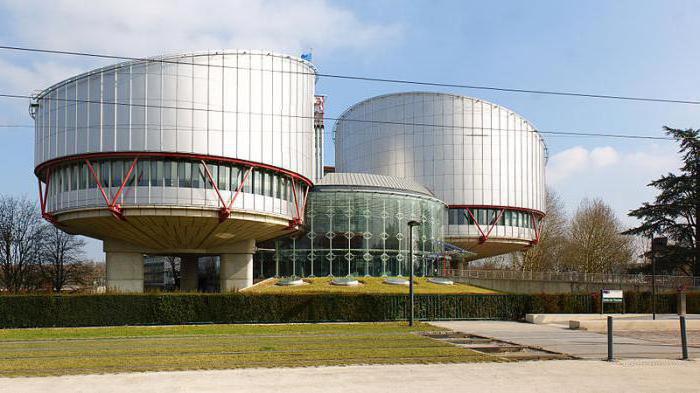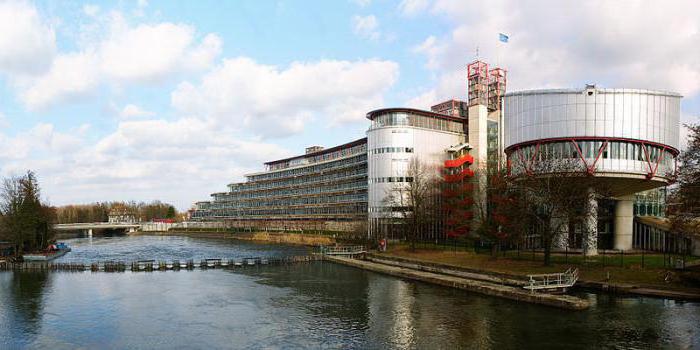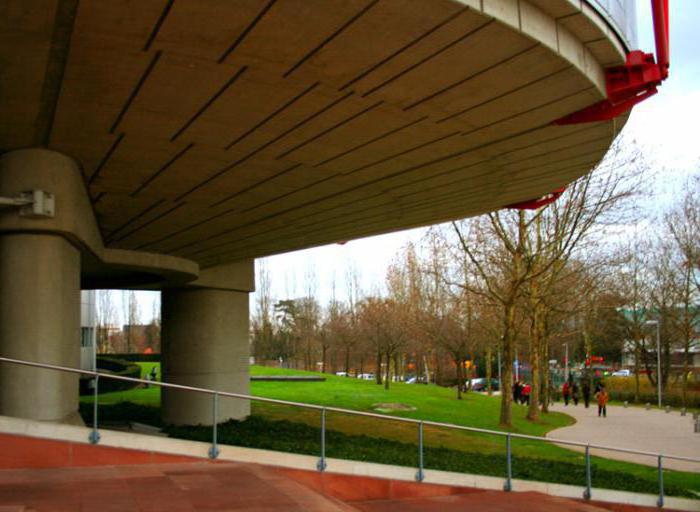The main body for the protection of human rights in Europe is the ECHR. What it is? This abbreviation stands for European Court of Human Rights. The organization has been operating for more than 50 years and is considered quite effective in realizing the rights of a citizen and a person, as well as in countering political regimes that are engaged in the genocide of their own people.
ECHR: history of creation
The mechanism for implementing the procedure for protecting human rights was established by the European Convention on Human Rights, which was adopted in December 1953. According to this document, three specialized bodies were created: the Commission on Human Rights, the ECHR (what it is, we will talk below), and the Committee of Ministers.

Since the system was formed for the first time and had no analogues in world history, the authors of the idea needed time to work out all the details. The European Court of Human Rights took up its direct duties in 1959.
Case and Decision Mechanism
The right to file an application with the ECHR is granted to citizens of countries that are represented on the Council of Europe (Ukraine and Russia joined this European parliamentary organization in the 1990s) after they failed to defend violated rights within the national judicial system. Also, the lawsuit may come from the state. In this case, the defendant is another state that violated the rights of a citizen of the state - the plaintiff.
Until October 1, 1994, statements of claim first came before the Commission on Human Rights. The commission took the matter into production and in the process of work decided whether it is possible to exhaust the problem at the level of the commission or whether it is worth referring the matter to the court. After the above date, people and states were able to file complaints directly to the court, since the commission as a body was liquidated.

Having accepted the complaint, the clerk of the court checks it for compliance with business standards and the jurisdiction of the ECHR. If all the requirements are met, a hearing is scheduled and then a decision is made.
Jurisdiction of the European Convention
It is worth paying attention to the fact that the ECHR can only be contacted regarding the protection of those rights guaranteed by the Convention on Human Rights. We are talking about the fundamental human rights and dignity of the individual, political and some socio-economic rights, namely:
- the right to live;
- a ban on torture of a person;
- freedom and integrity;
- non-interference in the private and family life of a citizen;
- the ability to freely, freely profess any religion, express their thoughts;
- the right to hold meetings and create public organizations, movements and parties;
- the opportunity to marry;
- guarantee of protection of private property;
- the right to a decent education;
- fair, free and democratic elections;
- the right not to be convicted twice for the same offense;
- a guarantee to foreigners that they will not be expelled from the country without legal grounds;
- equality of man and woman.
These are the cases that the European Court of Human Rights considers.

ECHR: judicial practice
The proceedings before the European Court may take several years. For example, we analyze the case of Verentsov v. Ukraine. The lawsuit was filed on March 21, 2011, and the final decision of the judge was made on July 11, 2013. By the way, cases in this court are named after the name of the plaintiff, and the name of the state against which the lawsuit is filed is indicated.
Consider the essence of the matter.In August 2010, a Lviv human rights organization filed an application with the city administration to hold rallies on Tuesday until January 1, 2011 in front of the prosecutor’s office. The mayor's office did not give an answer for a long time, and in October filed a lawsuit in protest against these actions. Alexei Verentsov and another 24 people held their first picket (contrary to the protests of the mayor's office) on October 12. Law enforcement officers used physical force and administrative arrest for a period of three days. The applicant was unable to defend his right to peaceful assembly in the Ukrainian judicial system.
In the final court decision we see several parts. First, the essence of the situation and what measures were taken against the plaintiff and his organization by the Ukrainian authorities are described. Data on appeals to Ukrainian courts in order to recognize the legality of his actions are also indicated. The following are excerpts from regulatory documents of national law (for example, the Constitution of Ukraine, the Code of Ukraine on administrative offenses, etc.), the practice of Ukrainian courts in such cases is systematized. Of course, in its investigation of the ECHR, whose judicial decisions are binding, it is also based on European law (for example, OSCE principles on freedom of peaceful assembly).

The Government of Ukraine filed a motion to remove the case from the general registry in 2012.
What decision was made by the court?
According to statistics, most cases for consideration by the ECHR come from Ukraine and Russia. Basically, court decisions are made in favor of the plaintiffs. In the case of Verentsov v. Ukraine, the decision was as follows:
- denied to the Ukrainian government the removal of the case from the general register;
- violations of articles 7 and 11 of the Human Rights Convention have been substantiated;
- violation of certain paragraphs of Art. 6 of the Convention;
- within 3 months from the date of the decision, the state of Ukraine must pay the plaintiff compensation in the amount of 6,000 euros.

Judges of the ECHR
The formation of the judiciary is as follows. The number of judges corresponds to the total number of member states of the Council of Europe. At present, 47 European countries have joined this organization.
Judges are elected according to such rules. The state submits a list of three candidates who meet certain criteria for education and work experience in the specialty. The specially authorized persons of the ECHR from this list already select the judge who will represent the state. The term of the judge's cadet is 9 years. Re-election is possible. The maximum term of a judge in the ECHR (European Court of Human Rights) is 18 years.
Who represents some of the post-Soviet states in this court?
Becoming a judge of the European Court of Justice is the dream of many lawyers, because such a fact can be regarded as the highest recognition of merits to society.
Today, the judge from the ECHR from Russia is the former judge of the Supreme Arbitration Court Dmitry Dedov (the cadence ends on November 1, 2021). The term of tenure of the representative of the state of Georgia Nona Tsotsori ends soon - February 1, 2017. Ukraine is represented by Judge Anna Yudkovskaya. From 2012 to 2015, the woman was on maternity leave, so Ukraine used the exclusive (only for such cases) right to appoint a representative without a choice. It was Stanislav Shevchuk.
Belarus has no representatives in the ECHR. "What is this violation?" - many will say. The fact is that Belarus is the only country on the continent that is not part of the Council of Europe.

Conclusion
The most effective pan-European organization that protects fundamental human and civil rights in European countries is the ECHR. What is it, you could learn from the article.
Today, the position of European institutions is to respect the human rights that must be respected in a democratic society.
